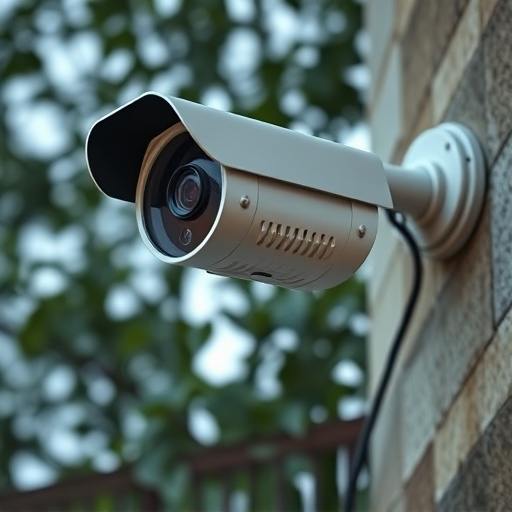Fake cameras, strategically placed in high-risk retail areas like entry points and stockrooms, effectively deter theft and neighborhood crime. Their realistic appearance and psychological impact act as a cost-effective deterrent without requiring actual surveillance. Retailers must follow local regulations, consult legal experts, and integrate fake cameras with real monitoring for maximum effectiveness while respecting privacy.
“Enhance retail security and deter neighborhood crime with mock security cameras—a cost-effective, legal solution. This comprehensive guide explores the multifaceted role of fake cameras in modern retail environments, delving into their preventive capabilities against theft and vandalism. We’ll uncover benefits beyond visual deterrence, including community trust and psychological impact. Learn about strategic placement techniques and essential legal considerations for retailers aiming to bolster security without compromising ethics. Discover why fake cameras are a game-changer in neighborhood crime prevention.”
- Understanding the Role of Mock Security Cameras in Retail Stores
- Benefits of Using Fake Cameras for Crime Prevention in Neighborhoods
- Types and Placement Strategies for Effective Visual Deterrence
- Legal Considerations and Best Practices for Retailers Implementing Mock Surveillance Equipment
Understanding the Role of Mock Security Cameras in Retail Stores
Mock security cameras, also known as fake cameras, play a pivotal role in enhancing retail store security and deterring potential thieves. These realistic-looking devices simulate actual surveillance equipment, effectively tricking criminals into believing they are being watched. In today’s digital era, where neighborhood crime prevention is a top concern, businesses can greatly benefit from this cost-effective solution.
Retail stores often become targets for theft and shoplifting due to their attractive displays and high-value merchandise. By strategically placing mock cameras around the store, owners create an illusion of enhanced surveillance, acting as a powerful deterrent. This simple yet clever tactic can significantly reduce instances of criminal activity, promoting a safer shopping environment for customers and staff alike.
Benefits of Using Fake Cameras for Crime Prevention in Neighborhoods
The deployment of fake cameras, also known as mock security cameras, offers a cost-effective and strategic solution for crime prevention in neighborhoods. While they don’t provide actual surveillance capabilities, their very presence acts as a powerful deterrent to potential criminals. This psychological effect is significant; knowing that an area is under watchful eye can discourage illegal activities before they even begin.
Moreover, these fake cameras can be strategically placed in high-crime areas or vulnerable spots within a neighborhood, such as alleyways, backstreets, and nearby public spaces. The act of installing them sends a clear message to criminals that law enforcement is not only visible but also active in the area. This visibility can lead to reduced crime rates and improved safety for residents.
Types and Placement Strategies for Effective Visual Deterrence
Mock security cameras, also known as fake or decoy cameras, have become a popular tool for retail stores to enhance their security and deter potential thieves. These devices offer an effective visual deterrent, sending a clear message to would-be criminals that they are being watched. There are various types of fake cameras available in the market, each designed with unique features to suit different needs. From realistic looking motion-activated models to simple static displays, these cameras can be strategically placed to maximize their impact.
When implementing a fake camera system, placement is key. Retailers should consider high-risk areas like entry points, stockrooms, and display zones. Placement strategies might include mounting cameras on ceilings or walls, positioning them near windows, or using tripod-mounted models in open spaces. The goal is to create an environment where criminals feel they are constantly under surveillance, thus reducing the likelihood of theft and creating a safer shopping atmosphere. Additionally, combining fake cameras with genuine security equipment can further strengthen the overall security measures for neighborhood crime prevention.
Legal Considerations and Best Practices for Retailers Implementing Mock Surveillance Equipment
When implementing mock security cameras, retailers must navigate a range of legal considerations to ensure compliance and avoid potential pitfalls. While fake cameras can be an effective deterrent for neighborhood crime prevention, their use is subject to regulations that vary across jurisdictions. Retailers should consult local laws and seek legal advice to understand the permitted uses and restrictions on surveillance equipment, including mock cameras. Transparency and clear signage are crucial; stores must clearly communicate the nature of the devices to customers and employees to maintain ethical standards and protect privacy rights.
Best practices for retailers include positioning fake cameras strategically to enhance security without causing alarm or confusion. These devices should mimic genuine surveillance systems in appearance but be clearly distinguishable from real cameras to avoid misleading customers or staff. Regularly updating and testing mock camera placements can help maintain their effectiveness as potential criminals adapt to the existing security measures. Additionally, integrating these dummy cameras with a comprehensive security strategy that includes real monitoring and response protocols maximises their preventive benefits for retail spaces.
Mock security cameras, or fake cameras, have emerged as powerful tools for both retail stores and neighborhood crime prevention. By strategically placing these realistic yet non-functional devices, businesses can deter theft and create a sense of enhanced security. In neighborhoods, fake cameras act as a visual deterrent, encouraging potential criminals to think twice before committing offenses. As discussed in this article, understanding the benefits, types, placement strategies, and legal considerations is crucial for retailers looking to implement mock surveillance equipment effectively. Embracing these best practices can significantly contribute to safer shopping environments and reduced crime rates in communities across the country.
